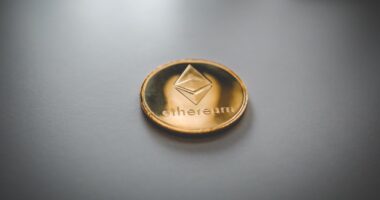Non-fungible tokens (NFTs) are unique digital assets that represent ownership or authenticity of specific digital items, such as artwork, videos, or music. Unlike cryptocurrencies, which are interchangeable, NFTs are one-of-a-kind and built using blockchain technology. This ensures their uniqueness and prevents replication or exchange on a like-for-like basis.
NFTs offer significant potential in the crypto market by providing a secure and transparent method for artists to monetize their digital creations. By tokenizing their art, creators can sell it as an NFT while retaining ownership and control over their work. This also allows for potential value appreciation over time.
For collectors, NFTs present a new investment opportunity in digital art, with the added benefits of provenance and scarcity. The growing demand for digital art has positioned NFTs as a unique opportunity for artists to access a global market of collectors and enthusiasts. This expansion of the digital art market through NFTs can potentially increase the value of artists’ work and create new revenue streams.
As the NFT ecosystem continues to evolve, it is likely to play an increasingly important role in the digital economy and the art world.
Key Takeaways
- NFTs are unique digital assets that represent ownership of a specific item or piece of art, and they have the potential to revolutionize the art and collectibles market in the crypto space.
- When choosing a platform to create and sell your NFT art, consider factors such as fees, user interface, audience reach, and the platform’s reputation for security and authenticity.
- To create unique and marketable NFT art, focus on originality, storytelling, and engaging with your audience through social media and other online platforms.
- Promote your NFT art by building a strong online presence, leveraging social media, collaborating with other artists, and participating in NFT marketplaces and events.
- Understand the legal and copyright issues surrounding NFT art, including the importance of obtaining proper licenses and permissions for the use of copyrighted material.
- Maximize your profits by carefully pricing and selling your NFT art, considering factors such as scarcity, demand, and the perceived value of your artwork in the market.
- Stay informed about the latest trends and developments in the NFT market, including news and updates related to Ethereum (ETH), Bitcoin (BTC), and other cryptocurrencies.
Choosing the Right Platform to Create and Sell Your NFT Art
Popular NFT Marketplaces
Platforms like OpenSea, Rarible, and Foundation have gained popularity for their user-friendly interfaces and wide range of supported file types, making it easy for artists to mint and list their NFTs for sale.
High-End Digital Art Platforms
Other platforms, such as SuperRare and Nifty Gateway, cater to high-end digital art collectors and offer curated selections of exclusive NFTs.
Factors to Consider When Choosing a Platform
Before choosing a platform, it’s important to consider factors such as fees, community engagement, and the platform’s terms of service. Some platforms charge a minting fee or take a percentage of each sale, so it’s essential to understand the cost implications of using a particular platform. Additionally, consider the platform’s community and audience—some platforms have a more active and engaged user base, which can help increase the visibility and sale potential of your NFT art. Lastly, review the platform’s terms of service to ensure that it aligns with your goals as an artist and provides adequate protection for your intellectual property rights.
Creating Unique and Marketable NFT Art: Tips and Tricks

Creating NFT art that stands out in a crowded marketplace requires a combination of creativity, technical skill, and strategic thinking. To maximize the marketability of your NFT art, consider incorporating elements of rarity, storytelling, and interactivity into your creations. Limited edition series or one-of-a-kind pieces tend to perform well in the NFT market, as collectors are drawn to the exclusivity and scarcity of these items.
Additionally, adding a narrative or backstory to your art can help create an emotional connection with potential buyers, making your NFT more memorable and desirable. Incorporating interactive or dynamic elements into your NFT art can also enhance its appeal and value. Consider creating animated or generative art that evolves over time or responds to user input, providing a unique and engaging experience for collectors.
Furthermore, collaborating with other artists or creators can help expand your reach and attract new audiences to your NFT art. By leveraging the strengths and fan base of other creators, you can tap into new markets and increase the visibility of your work.
Promoting Your NFT Art and Building a Strong Online Presence
Promoting your NFT art and building a strong online presence are essential steps in establishing yourself as a successful NFT artist. Utilize social media platforms, online communities, and digital art forums to showcase your work, engage with potential buyers, and connect with other artists. Building a strong online presence can help you cultivate a dedicated following of collectors and fans who are interested in your art and may be more likely to support your NFT releases.
In addition to social media promotion, consider hosting virtual exhibitions or live events to showcase your NFT art and engage with your audience. Virtual galleries and online events provide an immersive way for collectors to experience your art and can help generate buzz and excitement around your NFT releases. Collaborating with influencers or partnering with established brands can also help increase the visibility of your NFT art and attract new buyers.
Navigating the Legal and Copyright Issues Surrounding NFT Art
Navigating the legal and copyright issues surrounding NFT art is crucial for protecting your intellectual property rights as an artist. When creating and selling NFT art, it’s important to ensure that you have the legal right to tokenize and sell the work. If your art incorporates elements such as copyrighted characters, logos, or trademarks, it’s essential to obtain the necessary permissions or licenses from the rights holders before minting an NFT.
Additionally, consider registering your copyright for digital art with the appropriate authorities to establish a clear record of ownership and protect your work from unauthorized use or reproduction. When selling NFT art, clearly outline the rights and permissions granted to the buyer in the accompanying smart contract or terms of sale to avoid any potential disputes or misunderstandings in the future.
Maximizing Your Profits: Pricing and Selling Strategies for NFT Art

Setting the Right Price for Your NFT Art
When setting the price for your NFT art, consider factors such as the uniqueness of the piece, your reputation as an artist, current market demand, and comparable sales of similar works. Some artists opt for auction-style sales to allow the market to determine the value of their art, while others prefer fixed-price listings for more predictable sales.
Offering Incentives and Bonuses
In addition to pricing strategies, consider offering incentives or bonuses to early buyers or collectors who purchase multiple pieces of your NFT art. Limited-time promotions or exclusive access to future releases can help drive sales and create a sense of urgency among potential buyers.
Diversifying Your Sales Approach
Furthermore, consider diversifying your sales approach by offering different types of NFTs, such as digital collectibles, redeemable tokens for physical merchandise, or access tokens for exclusive content or experiences.
Staying Informed: Keeping Up with the Latest Trends and Developments in the NFT Market
Staying informed about the latest trends and developments in the NFT market is essential for navigating this rapidly evolving space. Keep an eye on industry news, updates from popular NFT platforms, and announcements from influential artists and creators to stay ahead of emerging trends and opportunities. Join online communities, forums, and social media groups dedicated to NFT art to connect with other artists, collectors, and industry insiders.
Additionally, stay informed about developments in the broader cryptocurrency market, including news related to Bitcoin (BTC), Ethereum (ETH), and other digital assets that may impact the value and demand for NFTs. Understanding the interplay between cryptocurrencies and NFTs can help you make informed decisions about pricing, sales timing, and investment opportunities within the NFT market. In conclusion, understanding the potential value of NFTs in the crypto market requires a grasp of their unique properties as digital assets.
Choosing the right platform is crucial for creating and selling NFT art successfully; it involves considering factors such as fees, community engagement, and terms of service. Creating unique and marketable NFT art involves incorporating elements of rarity, storytelling, interactivity into your creations; promoting your art is essential for building a strong online presence; navigating legal issues is crucial for protecting intellectual property rights; maximizing profits involves careful consideration of pricing strategies; staying informed about trends is essential for keeping up with developments in the NFT market.
FAQs
What is NFT art?
NFT art refers to digital artwork that is tokenized and sold using blockchain technology. Each piece of NFT art is unique and has a digital certificate of ownership, known as a non-fungible token (NFT).
How do you make NFT art?
To make NFT art, you can create digital artwork using various software and tools, such as graphic design programs or digital drawing tablets. Once the artwork is created, you can mint it as an NFT on a blockchain platform, such as Ethereum, using a specialized marketplace.
What are the secrets to selling NFT art?
Some secrets to selling NFT art include building a strong online presence, engaging with the NFT community, and marketing your artwork effectively. Additionally, creating high-quality and unique NFT art can increase its desirability and potential for sales.
What are some common misconceptions about selling NFT art?
One common misconception is that anyone can easily make a fortune by selling NFT art. In reality, success in the NFT art market requires dedication, skill, and a deep understanding of the digital art world. Additionally, there is no guarantee of immediate or substantial profits from selling NFT art.
Are there any risks associated with selling NFT art?
Yes, there are risks associated with selling NFT art, including market volatility, copyright infringement, and potential legal issues. It’s important for NFT artists to carefully consider these risks and take appropriate measures to protect their artwork and intellectual property.





